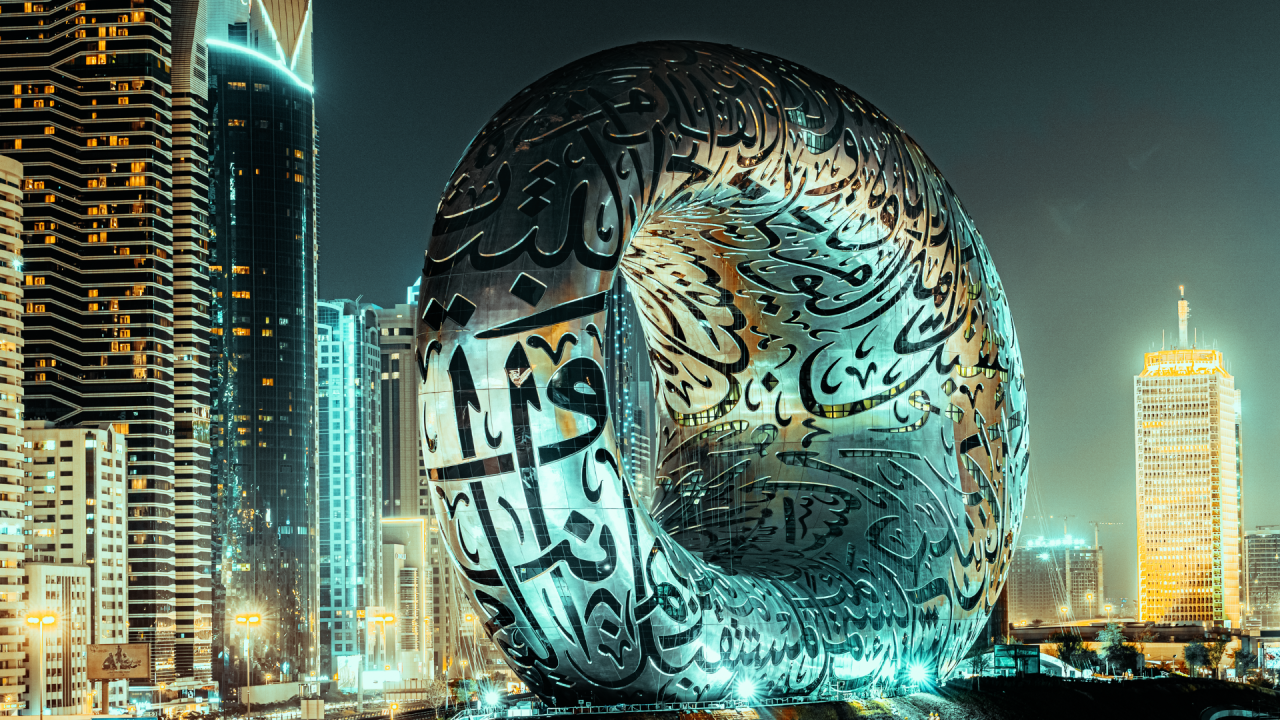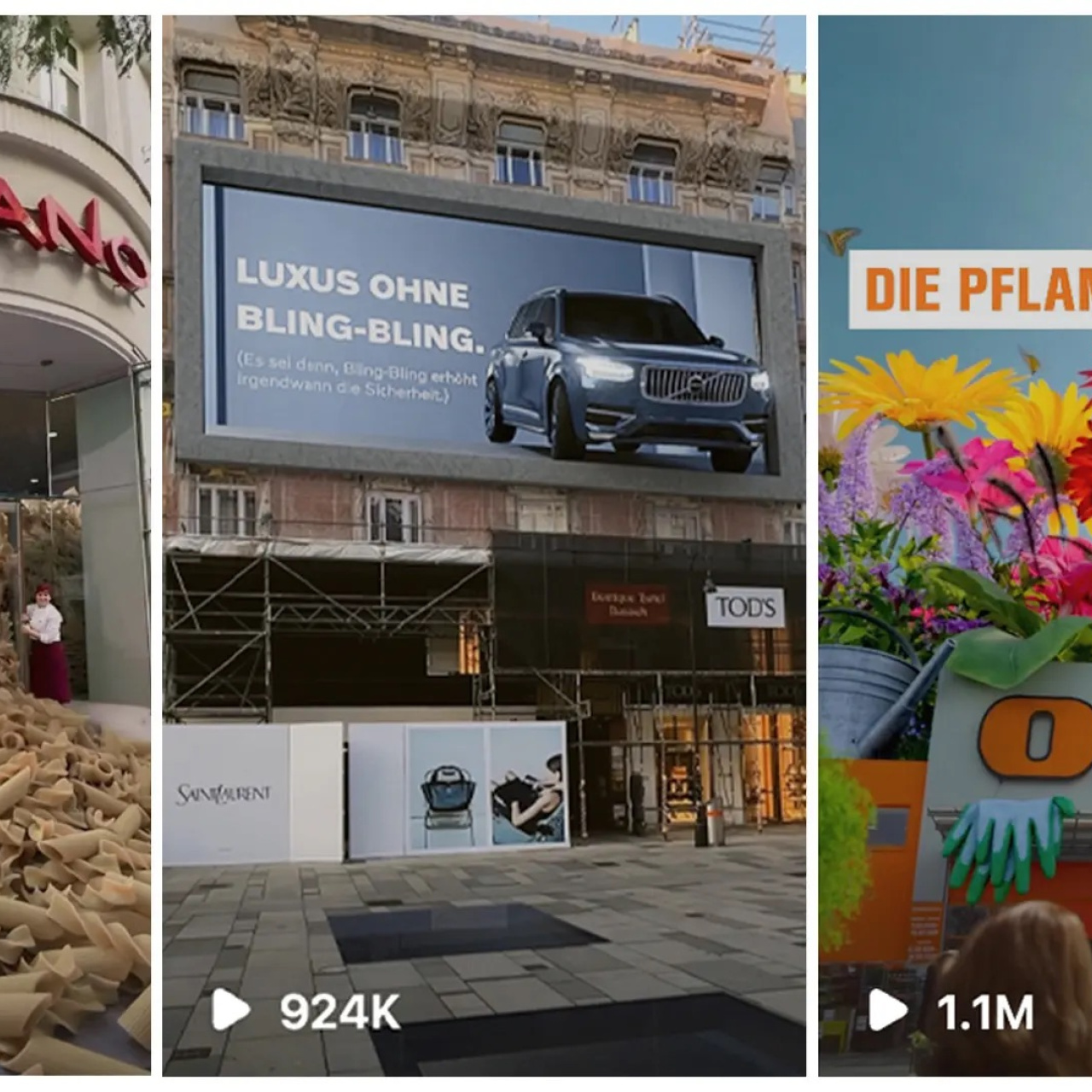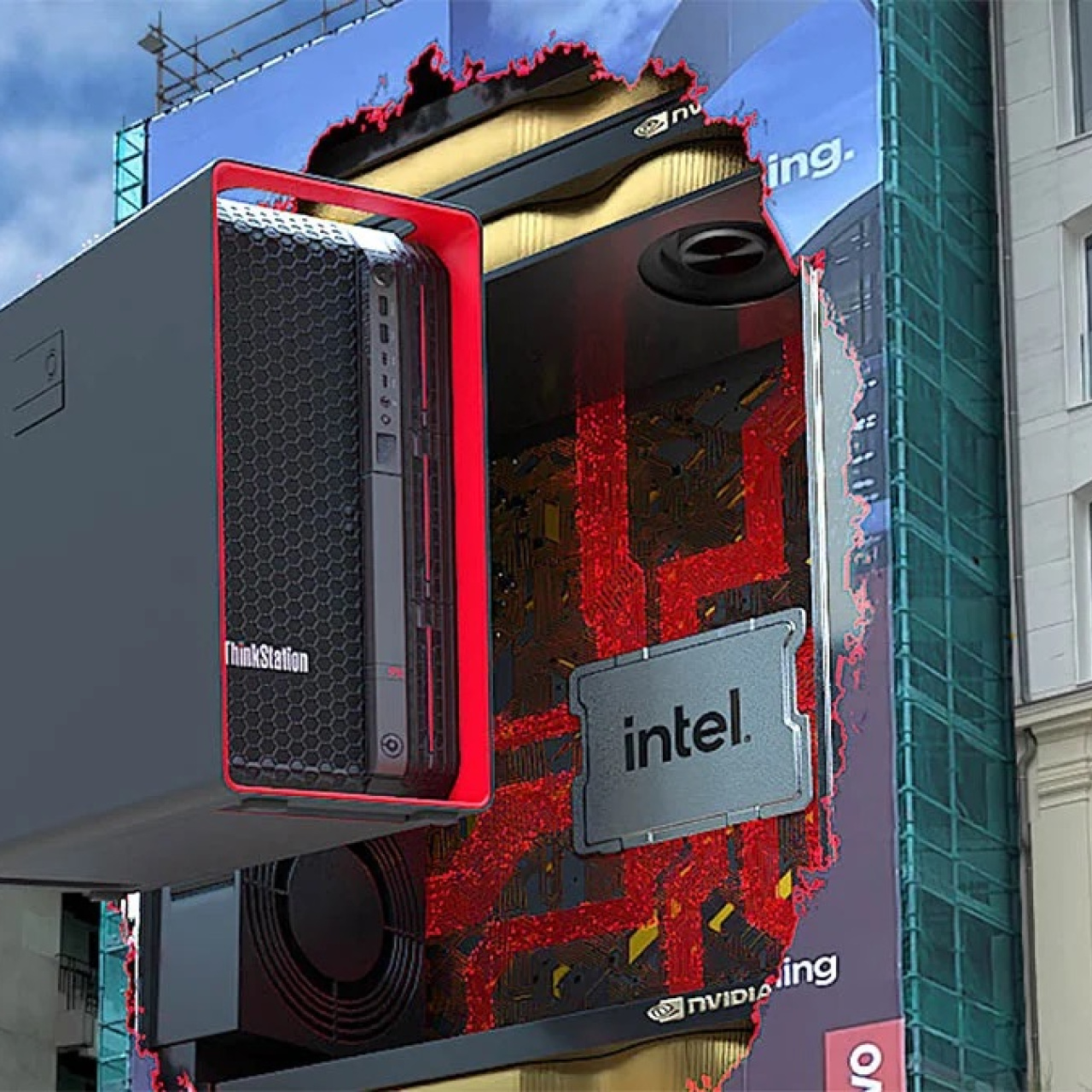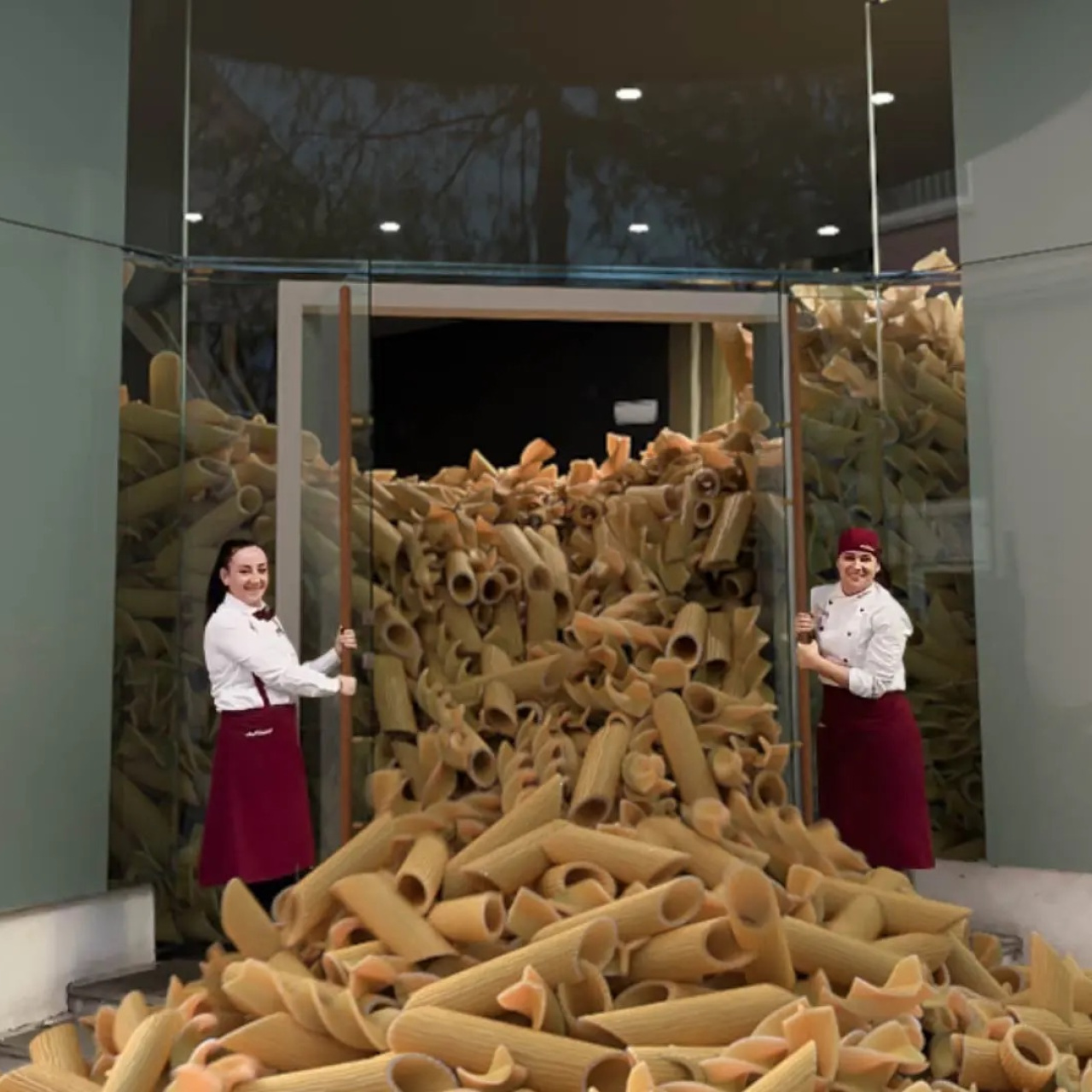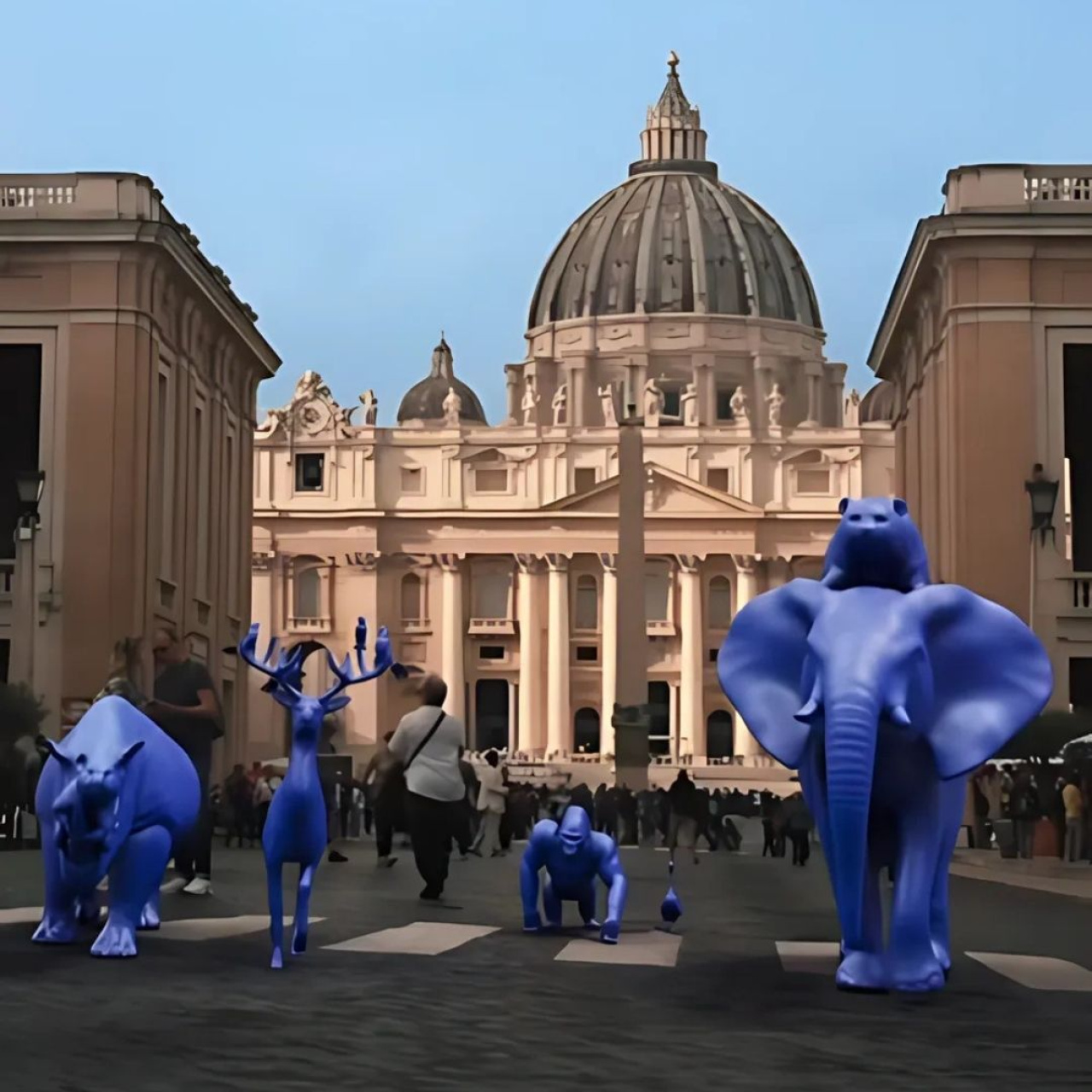Table of Contents
The rapid advancement of new technology and its integration into our daily lives has quickly shaped how advertisers reach and engage with their audience. And with brands and marketers moving towards the digital space, fake out-of-home (FOOH) advertising has emerged as a new form of advertising that is rapidly gaining traction across various industries.
Fake Out of Home is a form of digital advertising that uses CGI to impose 3D elements with actual video footage to create an illusion of advertising in the real world. Contrary to out-of-home advertising (OOH) which uses physical billboards, signs, and other media to reach consumers, this new creative format is popular on social media platforms in short-form videos.
And while out-of-home advertising has remained a staple in the industry and will continue to be so for years [1], FOOH is making its way into marketing plans for many reasons. But with any new trend, there is always a question of the future of FOOH: is it here to stay or just a passing trend?
What is FOOH Advertising and Its Future?
Fake Out of Home advertising can be defined as the combination of CGI with video footage of actual physical locations, creating a hyperrealistic product placement. This technology allows advertisers to seamlessly integrate their brand, product or message into different real life scenarios, without having to physically be there.
But what makes FOOH so appealing? The popularity of FOOH can be attributed to its ability to cut through the noise in a highly saturated advertising landscape, especially on social media.
It’s a unique “scroll stopper” for people and offers a new way of interaction with the brand. With the rise of ad blockers and increased digital clutter, FOOH provides a unique opportunity for brands to make an impact and stand out from their competitors.
On average, FOOH ads also will often perform better than a brand's usual online content, making it a valuable asset for marketers. The potential of FOOH is vast, and with the rapid advancement of technology, it's only going to get even better.
Check out this article for a more comprehensive guide on Fake Out of Home: Fake Out Of Home Advertising: The Ultimate 2024 Guide.
As digital advertising landscape continues to evolve, understanding how FOOH fits into the broader picture of modern marketing strategies is crucial. In the next section, we'll explore what awaits the future of FOOH advertising.
What is Driving the Future of FOOH Advertising?
The scale and innovation behind the future of FOOH are considered the highlights of the direction of advertising. And it's not just the technology that is driving this change, but also consumer behavior and expectations. Here are the top three driving forces behind the future of FOOH:
1. AI and Machine Learning:
AI and machine learning algorithms have been making waves in all industries, and advertising is no exception. More than 30% of current sales departments and related departments will be replaced by AI in the future, and that includes targeting and tailoring FOOH campaigns. [2]
While companies can still access customer data today for content distribution, third-party cookies will soon be a thing of the past. [3] Fortunately, with the help of AI and machine learning algorithms, marketers and brands can still analyze and interpret unstructured self-reported data such as social media posts, reviews, and product comments.
For FOOH advertisers, generative AI is a game-changer. This cutting-edge technology makes it easier to visualize and storyboard ad concepts quickly and communicate versions at a lower cost to the customer/brand. This means advertisers can visualize creative ideas quickly and therefor see them in action faster.
2. Augmented Reality (AR):
AR has been increasingly used in marketing, and in combination with fake out-of-home advertising it holds tremendous potential. AR allows marketers to increase the audience engagement with the brand, while FOOH assets are known for their extraordinary numbers on social media.
Brands are already using AR to make customers' shopping experience more interactive and immersive. For example there are apps and plugins that allow customers to try on products or visualize furniture in their homes.
Nevertheless, communicating an AR experience in the context of out-of-home advertising was often difficult. FOOH advertising enables marketers to showcase the experience in a unique and fun way suitable for social media—this is exactly where the potential sits.
We at rendersnek believe that combining AR Experiences with FOOH will only be the next logical step. Moreover, we predict that they will both amplify each other. But don’t just take our word for it — with the global AR market expected to reach $8 billion by 2029, we'll likely see more innovative uses of AR in combination with fake out-of-home advertising [4].
3. Social Media Influence
Social media plays a crucial role in driving the future of FOOH advertising. With over 5 billion active social media users worldwide, social platforms have become many people's primary source of information and entertainment [5].
Social media platforms like Instagram, TikTok, or Youtube allow FOOH ads to reach a massive audience, catapulting the brand's message onto the screens of millions and making it more shareable. When people engage with these ads, the platform’s algorithms promote them even more because high engagement keeps users on the site longer.
Attention is currency in today's world, and FOOH ads make money. The more attention your ad gets, the more the platform will push it to other users — this will only contribute to a bright future of FOOH ads and mixed Reality Ads.
4. Computing Power
Over recent years, graphics processing units (GPUs) have become fundamental behind high-computing processes, especially in language learning models (LLM), generative AI, and 3D technology. It's no surprise that the GPU market is projected to grow by 32% in five years. [6]
With this growth and demand, access to GPUs has become more widely available and affordable, making it easier for even smaller 3D studios and individuals to create high-quality FOOH ads using 3D technology. This will further drive the future of FOOH ads, making it more accessible and cost-effective for both artists and companies.
How is the Industry Adopting the Future of FOOH Advertising?
The future of FOOH looks promising, and the industry is already taking note. Many companies have already tapped in, including major players in the beauty and fashion industry, like Maybelline and Jacquemus, who have already used drivers of the future of FOOH to promote their products.
FOOH isn't limited to promoting a product or a line, either. Other industries, like the food and retail sector, have also seen success with FOOH campaigns. Here are two examples of companies adopting FOOH in their industry.
In celebration of World Pasta Day, Vapiano, an Italian restaurant chain, promoted a €9.90 discount on their pasta dishes through a FOOH campaign. Using a shot of a facade that appears to have huge strands of spaghetti hanging in front of it, the FOOH ad pans to two Vapianistas who open the doors to reveal an avalanche of pasta inside.
The ad was a huge success, garnering over 400,000 views within the first few hours and 1 million views (and counting!) on Instagram and effectively promoting Vapiano and their World Pasta Day deal across various locations in Austria. This is a great example that you don't need a product launch or announcement to use FOOH advertising effectively.
A World Pasta Day campaign by Vapiano on Instagram, October 22, 2023
In honor of the iconic cycling event, Tour De France 2024, Lidl-Trek, a professional cycling team based in the US, used an FOOH ad to promote the race. The ad shows a gigantic Lidl Paper Bag in front of the Florence Cathedral, where four Lidl-Trek riders cycle through and retrieve water bottles with a wave.
The ad was a massive success, amassing over 5 million views on Instagram and effectively promoting the Lidl-Trek team and their participation in Tour De France 2024. As illustrated, FOOH ads are versatile and can be used in various industries to promote products, events, or even a brand's values.
6 Reasons Why the Future of FOOH Advertising Should Be Here to Stay: Pros and Cons
The future of FOOH advertising looks bright, but as with any trend, there's always a debate on whether it's here to stay or just a passing fad. Here are six reasons why the future of FOOH ads has the potential to become a staple in the advertising industry, as well as some possible drawbacks to consider.
Pros:
1. Novel and attention-grabbing
CGI/ 3D animations used in FOOH ads are still relatively new format that you run into on social media, so this form of advertising easily stands out among the sea of traditional ads and is more eye-catching for consumers.
This novelty factor gives brands a higher chance of going viral organically and can lead to increased brand exposure and unique audience reach, without additional costs for ad placement. However, at Rendersnek, we recommend reserving some budget to push the content in order to help the algorithm find the right audience.
Learn more about how this new form of advertising is making waves across all industries in this article: Why Choose Fake Out Of Home? Here Are 5 Important Benefits.
2. Cost-effective
Compared to traditional out-of-home advertising methods like billboards or TV commercials, FOOH ads are relatively cost-effective. You don't need to print or physically install anything, and production costs for creating digital 3D assets are typically lower than traditional advertising methods.
You can also market your FOOH ad across different locations worldwide, reaching a wider audience without incurring additional costs. Especially if it's a nonverbal ad - we at rendersnek recommend nonverbal formats - you can avoid the time and costs of translating your message into different languages while speaking to a larger target market.
And with the increasing availability and affordability of GPUs, smaller businesses or individuals can now access the technology needed to create FOOH ads.
3. Versatile and an avenue for creative expression
The strength of FOOH ads lies in the endless possibilities you have with just a single video footage. You can literally project any 3D element into the physical world and make it interact with real-life objects.
Want huge flowers growing out of a marketplace? You got it.
OBI's Pflanzenfest on Instagram - 1.9 million views, 3.2k likes, 50 comments, 50 shares
Want a gorilla to be “accidentally” able to shop for groceries and be caught doing it? No problem.
Billa Pflanzilla on Instagram - 470k views, 3k likes, 130 comments, 40 shares
Brands can use FOOH advertising to inject their personality and creativity into their campaigns, making it a great avenue for self-expression and differentiation in the competitive advertising industry.
4. Measurable Metrics
With various analytics tools available, brands can easily track the success and impact of their FOOH campaigns. From views and likes to shares and comments, brands can see real-time metrics and measure the effectiveness of their ads in reaching their target audience and other KPIs.
Want to learn how to measure your FOOH ad campaigns? Here's how: How To Measure FOOH Ad Success: 29 Essential Metrics & Tips.
Cons:
1. Ethical concerns and potential backlash
With the rapid advancement of VFX and CGI technology, which allows for the creation of better and even more hyper-realistic FOOH ads every day, there is a potential concern of misleading or deceiving consumers. Conversations surrounding transparency and authenticity in advertising have become increasingly relevant, and customers may feel misled or manipulated if they discover a FOOH ad is not an actual physical installation (Fun fact: marketers sometimes also use “manipulated reality ads” to describe FOOH ads).
There is also the possibility of backlash if the place used in the FOOH ad holds a significant cultural or historical significance. This is why legal research and acquiring the necessary permits and permissions are crucial—our team at rendersnek makes sure to cover all the bases before filming an FOOH ad.
2. Risk of oversaturation
As various industries adopt FOOH advertising, there is a potential for oversaturation and diminishing impact. Brands and studios could copy each other's ideas and produce repetitive and unoriginal FOOH ads, making the novelty factor that makes FOOH attention-grabbing obsolete.
But, just as there superhero movies with impressive CGI effects are still being produced despite already thousands of them, FOOH ads will continue to have room for innovation and creativity as long as brands continuously strive to differentiate themselves and push the boundaries.
Learn what to do and not to when it comes to making Fake Out of Home ads in this article: When FOOH Ads Fails: 5 Top Tips On How To Avoid Them.
Final thoughts
It's no stretch to say that the future of FOOH advertising has the potential to revolutionize the advertising industry as we know it. Its cost-effectiveness, versatility, and novelty will continue to be attractive to brands looking to differentiate themselves and stand out in a crowded market.
However, as with any new technology, potential ethical concerns and risks of oversaturation need to be carefully considered.
As we move towards a more digital world, FOOH advertising will likely become an integral part of marketing strategies for businesses of all sizes. Imploring marketers and entrepreneurs to experiment with FOOH is a crucial step in pushing the boundaries of what's possible in advertising and staying relevant in an ever-evolving industry.
But while it's normal for trends to cycle and evolve, one thing's for sure - FOOH advertising has definitely made its mark and will continue to do so in the future. So, whether you're a consumer admiring a giant floating pink elephant or a marketer brainstorming your next big campaign, keep an eye out for FOOH - it's here to stay.
